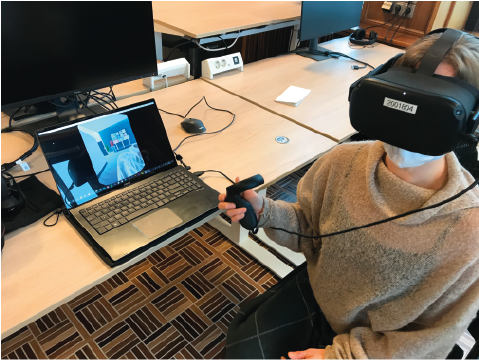The Empathy Lab
The Empathy Lab is an interactive experience project to bring the students of AUAS together by connecting them in deeper levels.
Client
Creative Media for Social Change
Prof. Dr. Tamara Witschge
Project Type
UI/UX, Concept, Interaction & Experience Design
Role
Research, Concepting, UI & UX Design
Team
Alan Ayoubi, Elif Kuvanlik, Tudor Cora, Xabyne van Veen
Year and Duration
2021 - 3 months
An interactive way to empathize & share stories
Overview
The importance of addressing inclusion increases as our society becomes more diverse. There is, however, a lack of awareness at Amsterdam University of Applied Sciences (AUAS) due to inadequate representation of communities. Because of this, students are uncomfortable sharing their stories and emotions.
As a result, we created an inclusive space at AUAS' Benno Premselahuis. The focus will be on empathy, where students can engage in a variety of activities in order to feel recognized.
The topic of diversity and inclusion is sensitive, which makes it difficult for people to discuss it. For social inclusion and diversity progression to occur, individual and collective awareness is essential. A student's approach to this topic can be influenced by vulnerability and politically correct speech.
We asked ourselves the following research question: How can we create a space for change, so students feel acknowledged and free to express themselves? Answers to these questions were found through an integrated research strategy.
Problem Space
The Amsterdam University of Applied Sciences aspires for a diverse community among its students and faculty, and yet this diversity needs to be encouraged, valued, and visible. At the moment, there is no connection with the students in the Benno Premselahuis building, therefore “The Creative Media for Social Change” hopes to create a more active and entertaining setting that will raise awareness about diversity.
Solution
To take over parts of the university buildings and stimulate social interaction through a playful physical installation with digital components that is emotion-driven, to improve the visibility and recognition of diverse communities.
Challenges
01 How can we create a space for change?
02 How can we create a difference within Benno Premselahuis?
03 How can we create awareness?
Process
Research
Examining the context
To create awareness, perhaps the most valuable approach is to understand students' behavior. We developed inquiry research that gave us surprising insights - students do not interact with a probe where they can share and visualize their experiences. It was a new challenge for us to create awareness when students are hesitant to start conversations.
We gather more information through interviews and surveys. AUAS partners and students from the Benno Premselahuis consider each other open-minded, according to interviews we conducted. Despite this, it is hard to build social connections within the building because students feel very divided. The lack of social gathering places is one of the reasons why students feel this way. The students expressed their strong opinions about the plainness of the building and how it is at their expense to interact with others.
We then continued our research and ideation by creating different user personas and a user journey map according to our interactions with the students, and we did the ideation methods "Crazy 8" and "How Google does it" to gather all our findings to come up with decisions.
Decisions
Social Gathering
As our starting point, we focused on unifying students in a bright and comfortable environment, which addressed the underlying issue. Since empathy plays a key role in building engagement, we attended a workshop on increasing empathy.
As a team, we decided to design this environment as a Virtual (3D) room. After combining our decisions, we created a room map with different points that touch on the different problems that arise. A digital wall for people to share and read stories, a library where you can learn more about empathy, gratitude, and recognition, a booth for them to safely talk about their stories, and a corner for empathy games for the people to connect with each other.
With all of our findings, four approaches have been developed to raise awareness and engage the majority of students. Our goal was to raise awareness using four different approaches in order to gain the attention of the majority of students. Storytelling is one way to discover stories, while reading about stories is another, while playing empathy games is another way to gain greater acceptance of stories. Taking this approach ensures that all students feel part of the solution.
Recognition at the center
Our priority was to ensure participation through recognition. Many students encounter insecurity and hesitation when talking about their own experiences. In order to avoid lowering the threshold for participation, we don't want to make them feel obligated to share their stories. Finding recognition may encourage students to open up more about their thoughts. We direct students to a separate website where they can write their stories whenever and wherever they want (anonymously).
We designed a screen to allow 3 people to read and listen stories at the same time and added a QR code with the link to the website where people can tell their stories.
Visuals
I designed different posters to be displayed all over the school in order to promote our project and attract the attention of our target audience which directs the people to The Empathy Lab. At first, I designed colorful and experimental posters with quotes about our place. But after receiving feedback from our client, I decided to redesign them as they were not related to the emotion we were trying to evoke. I changed the whole design with the colors we used in the room, but unfortunately, they were a bit mysterious. Then I applied the colors to different parts of the posters to make the posters more calm and relevant.
User Testings
We performed 2 different types of user tests. We first tested the virtual 3D room with VR headsets. We also tested the digital wall with an iPad to learn more before finishing the project.
Secondly, using feedback from our crit session, we created a small area of our room to test the leap motion sensor and digital screen. For the purpose of getting a sense of the space we are going to construct, we reconfigured a meeting space with couches, soft pillows, plants, and a screen. To determine whether the digital prototype is clear, we conducted a moderated user test.
This project was developed in collaboration with Creative Media for Social Change as part of the Amsterdam University of Applied Sciences' Master Digital Design.






















